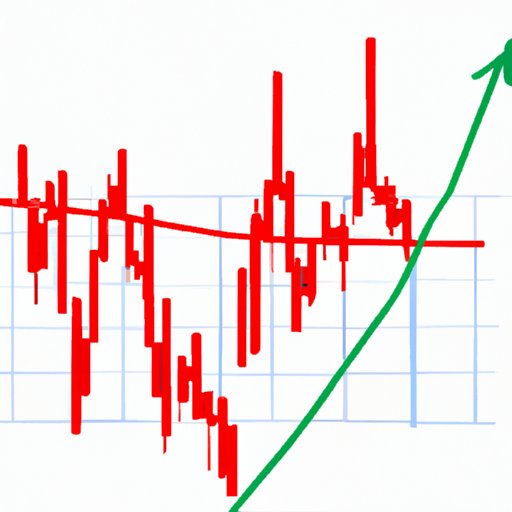Introduction
The VIX, or “Volatility Index”, is an index created by the Chicago Board Options Exchange (CBOE) to measure the level of implied volatility in the stock market. It is often referred to as the “fear index” because it tends to rise when investors become more fearful about the direction of the stock market. The purpose of this article is to explain how VIX works and explore its impact on market volatility.

Explaining the Basics of VIX Trading and its Impact on Volatility
The VIX reflects the market’s expectation of future stock price movement over a 30-day period. It is calculated using the prices of options on the S&P 500 index, and is expressed as a percentage. A higher VIX indicates greater volatility in the market, while a lower VIX suggests lower volatility.
Volatility is a measure of the amount of uncertainty or risk associated with the size of changes in a security’s value. It can be thought of as a measure of the speed and magnitude of price movements. When the market is volatile, prices can move quickly and unpredictably. In comparison, when the market is less volatile, prices tend to move more slowly and predictably.
The VIX provides investors with a way to gauge the level of fear in the stock market. An increase in the VIX generally indicates increased fear among investors, which can lead to increased volatility in the stock market. Conversely, a decrease in the VIX may indicate decreased fear among investors and lower volatility in the stock market.

Understanding the Mechanics of How VIX Works
The VIX is calculated using a complex formula that takes into account the prices of different option contracts on the S&P 500 index. The formula uses the prices of both puts and calls to determine a “weighted average” expected volatility. This weighted average is then used to calculate the VIX.
Derivatives are also used in the calculation of the VIX. These derivatives are financial instruments such as futures and options that derive their value from underlying assets. By taking into account the prices of these derivatives, the VIX is able to provide a more accurate measure of expected volatility in the market.
Analyzing the Role of VIX in Market Volatility
There are several factors that can affect the level of volatility in the market. These include economic events, geopolitical developments, corporate earnings, and investor sentiment. The VIX is able to capture these factors and provide a measure of expected volatility in the market.
The VIX can also be used to analyze the correlation between other equity markets and the S&P 500 index. For example, if the VIX rises, it could indicate increased fear among investors and increased volatility in the stock market. Conversely, if the VIX falls, it could suggest decreased fear among investors and lower volatility in the stock market.

Examining the Benefits and Risks of Investing in VIX
Investing in VIX can be a risky endeavor, but it can also offer some potential benefits. On the positive side, investing in VIX can provide investors with a way to hedge against market volatility and benefit from short-term price swings. Additionally, VIX can be used as a tool for portfolio diversification, as it moves independently of other asset classes.
On the downside, investing in VIX can be risky due to its high volatility and complexity. Additionally, VIX investments require a longer time horizon than other types of investments, and there is no guarantee of returns. Finally, VIX investments are extremely sensitive to market fluctuations, which can result in large losses.
Conclusion
In conclusion, VIX is an index created by the CBOE to measure the level of implied volatility in the stock market. It is calculated using the prices of options on the S&P 500 index, and is expressed as a percentage. The VIX provides investors with a way to gauge the level of fear in the stock market and analyze the correlation between other equity markets and the S&P 500 index. Investing in VIX can be a risky endeavor, but it can also offer some potential benefits such as hedging against market volatility and portfolio diversification.
(Note: Is this article not meeting your expectations? Do you have knowledge or insights to share? Unlock new opportunities and expand your reach by joining our authors team. Click Registration to join us and share your expertise with our readers.)
